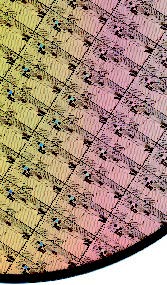The Ohio Supercomputer Center is creating a “Center of Excellence” for materials science to support Ohio researchers and scientists, such as Drs. Amar and Wilkins, who are working to advance materials characterization and multi-scale computational modeling and design. Computational materials researchers in Ohio are creating multi-scale models that bridge micro and macro length scales and multiple time scales, and they use Density Functional Theory for molecular level simulation of biological systems coupled with spatial methods typically used for polymers and strongly correlated systems.
The research of Ohio State University physicist John Wilkins, Ph.D., examines how complex structures form in nature.
His computational research methods range from classical molecular dynamics and more accurate density functional theory descriptions to highly accurate, extremely computationally intensive Quantum Monte Carlo methods. This computational flexibility enables simulations to be performed at the length and time scales required to study different aspects of structural properties and phase transitions.
For example, he and his team are using the resources at the Ohio Supercomputer Center to understand specific types of semiconductor defects at the nanometer level that can influence advances of electronic devices.
“By using our best classical potential for silicon, we’re pushing a flexible molecular dynamics simulation to increasingly larger and more realistic semiconductor defect structures, over a broad range of temperatures,” Dr. Wilkins said. “The program provides real-time, multi-resolution analysis, combined with still evolving feature detection analysis and visualization software.”
The results, Dr. Wilkins hypothesizes, will yield new insights into accurate atomic structures, growth and evolution mechanism, and energetics of atypical semiconductors.
--
Project Lead: John Wilkins, Ph.D., The Ohio State University
Research Title: Modeling Dynamically and Spatially Complex Materials
Funding Source: U.S. Department of Energy
For more information: www.physics.ohio-state. edu/~wilkins/vita/research/
